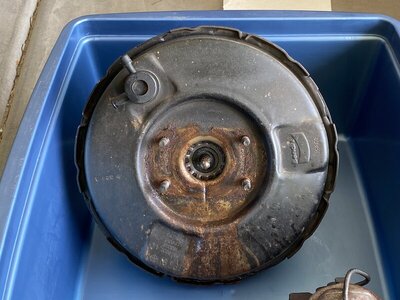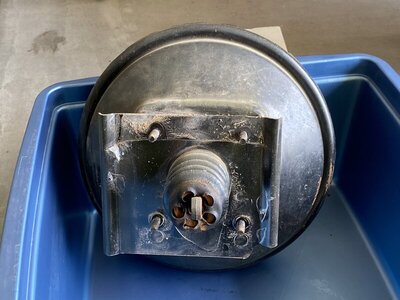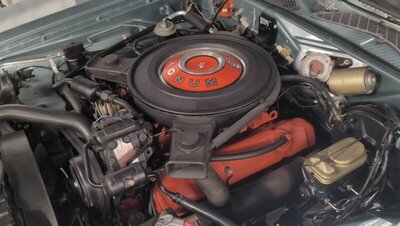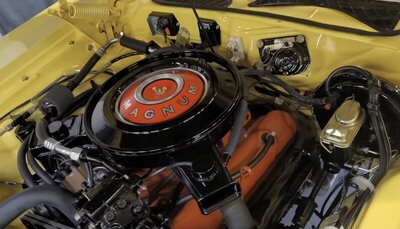MoparGuy68
Well-Known Member
I’ve got a Master Cylinder leak that has made my Bendix Brake Booster look like the face of “The Incredible Melting Man”.
You can scroll down to the next to last paragraph if you just want to see my question and don’t wanna read any boring history of my car.
There was already visible damage to the booster when I bought this car, but the leak seemed to be inactive. I had the rear wheels cylinders replaced, and a brake system flush at a Brake Masters in April. They pressed my brake pedal so many times, they nearly killed my battery while they “bled” the brakes. Ever since, I’ve had break fluid leaking daily from the master cylinder.
To protect my inner fender and frame rail, from further damage. I have wired a small aluminum pan under the booster to catch the leaking fluid. Most of the damage was already done over the previous owner’s watch, as he chose to do nothing about it. Like I have said before this car was neglected.
As some of you may already know, I’ve been fixing problems with this car continuously since I’ve owned it. Other problems were a higher priority over the brake cylinder. The aluminum pan was meant as a stop gap until the excessive heat in the Southwest passes.
I thought I’d give a little explanation as to why the brake booster and master cylinder look so horrific, but hopefully not too much to bore you.
The car appears to have a vintage Bendix booster, which I’m hoping can be saved. The master cylinder appears to be an aftermarket piece and not a vintage Bendix unit. The cylinder casting has “made in USA” cast into the bottom of it. This cylinder seems to be the correct style for 1971, just not a real Bendix cylinder.
I am asking for suggestions of what brand replacement cylinder to get just to attempt to stop the leakage and further deterioration of the brake booster. At some point in the future, if I ever transform this car into what I consider a “driveable vehicle”, I may try to get the correct vintage rebuilt Bendix cylinder. But for now, I’m thinking of trying to get a replacement remanufactured or new cylinder that’s not a piece of ****.
Definitely have leakage from the lid rubber seal. I think I also have piston seal leakage. Fluid level drops in the rear section (for the disc brakes), while the front section (for the drums) stays at the correct level. While driving the car, brakes feel normal. I always find some fluid in the aluminum catch pan after the car has sat motionless for a day.
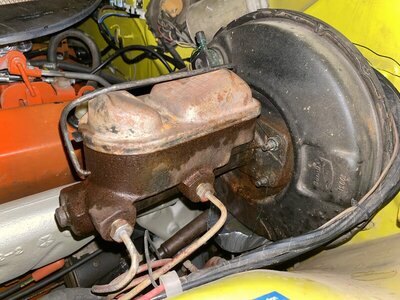
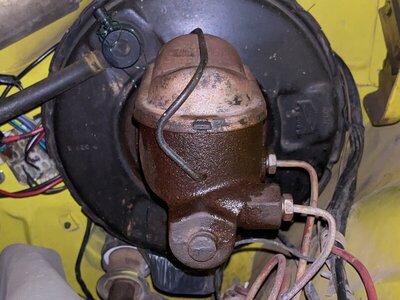
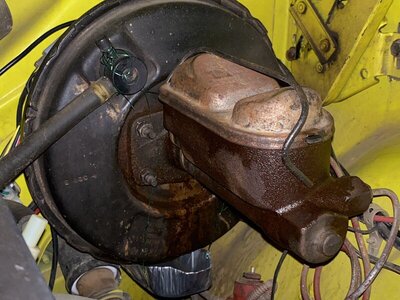
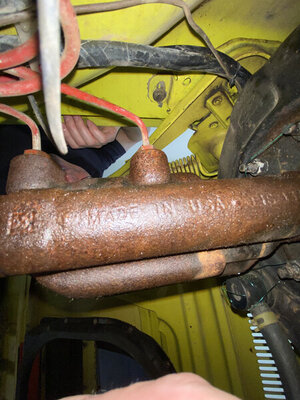
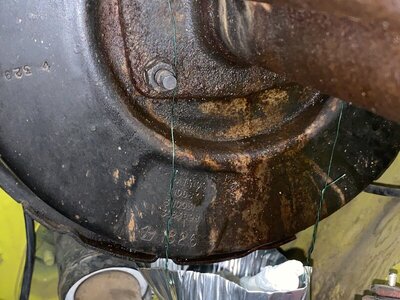
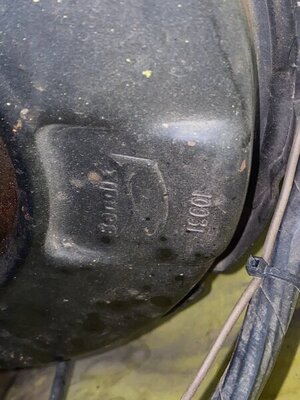
You can scroll down to the next to last paragraph if you just want to see my question and don’t wanna read any boring history of my car.
There was already visible damage to the booster when I bought this car, but the leak seemed to be inactive. I had the rear wheels cylinders replaced, and a brake system flush at a Brake Masters in April. They pressed my brake pedal so many times, they nearly killed my battery while they “bled” the brakes. Ever since, I’ve had break fluid leaking daily from the master cylinder.
To protect my inner fender and frame rail, from further damage. I have wired a small aluminum pan under the booster to catch the leaking fluid. Most of the damage was already done over the previous owner’s watch, as he chose to do nothing about it. Like I have said before this car was neglected.
As some of you may already know, I’ve been fixing problems with this car continuously since I’ve owned it. Other problems were a higher priority over the brake cylinder. The aluminum pan was meant as a stop gap until the excessive heat in the Southwest passes.
I thought I’d give a little explanation as to why the brake booster and master cylinder look so horrific, but hopefully not too much to bore you.
The car appears to have a vintage Bendix booster, which I’m hoping can be saved. The master cylinder appears to be an aftermarket piece and not a vintage Bendix unit. The cylinder casting has “made in USA” cast into the bottom of it. This cylinder seems to be the correct style for 1971, just not a real Bendix cylinder.
I am asking for suggestions of what brand replacement cylinder to get just to attempt to stop the leakage and further deterioration of the brake booster. At some point in the future, if I ever transform this car into what I consider a “driveable vehicle”, I may try to get the correct vintage rebuilt Bendix cylinder. But for now, I’m thinking of trying to get a replacement remanufactured or new cylinder that’s not a piece of ****.
Definitely have leakage from the lid rubber seal. I think I also have piston seal leakage. Fluid level drops in the rear section (for the disc brakes), while the front section (for the drums) stays at the correct level. While driving the car, brakes feel normal. I always find some fluid in the aluminum catch pan after the car has sat motionless for a day.







